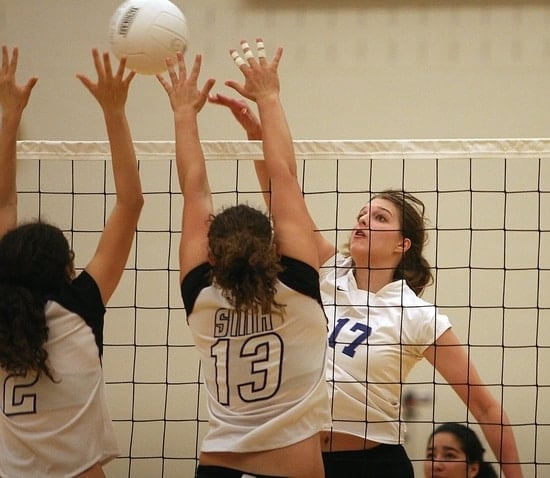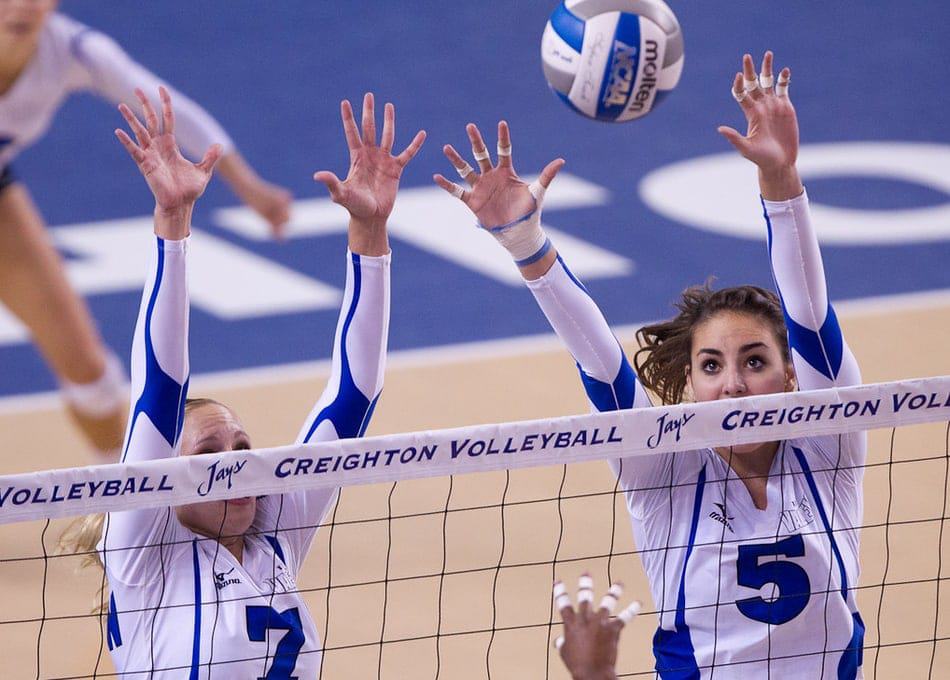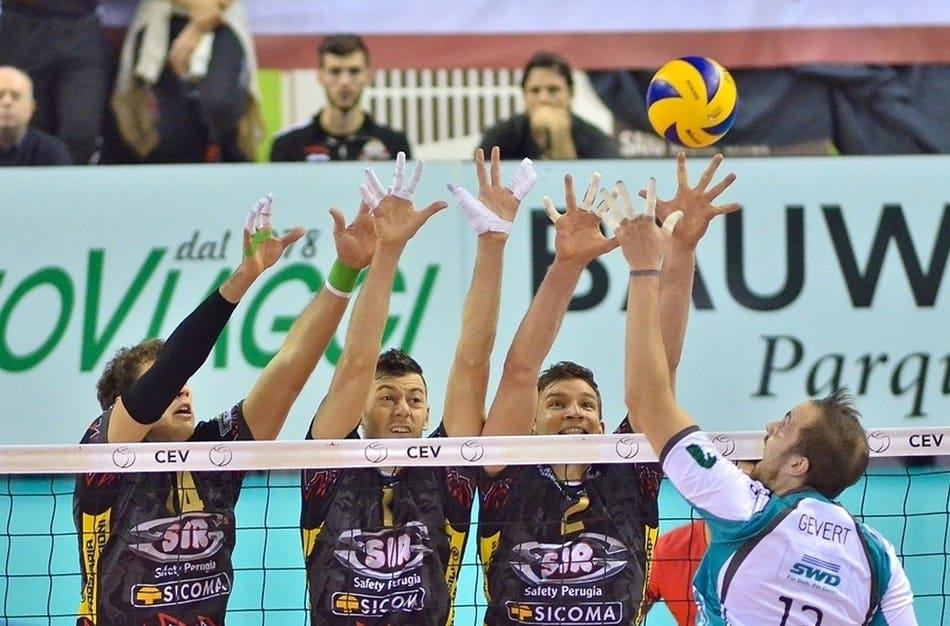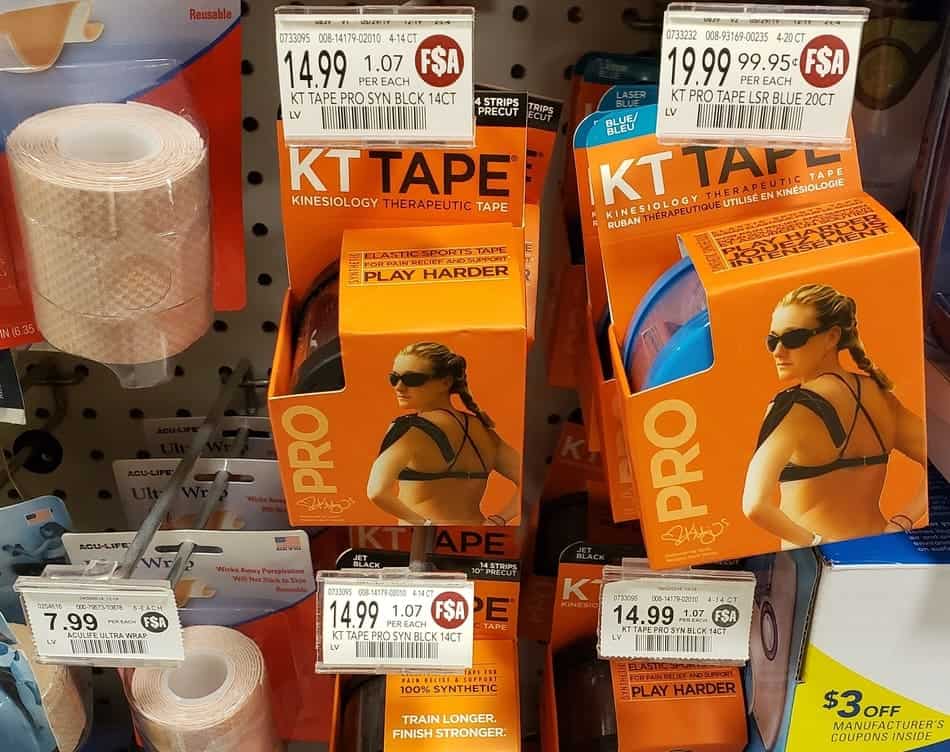Whether you’ve been around volleyball for a long time or you’re just getting started, you have probably noticed that some players tape their fingers and even wrists. Why do they do this? There are a few reasons why volleyball players tape their fingers.
The two main reasons for taping your fingers are: adding strength and protecting the finger itself.

How Do You Tape Your Fingers?
To benefit from finger taping, volleyball players have to tape their fingers correctly. Whenever possible, speak to a trainer, doctor, or coach before taping your fingers. If that’s not possible, here’s our best general advice.
How to tape your fingers for volleyball:
1. Place your hand flat on a hard surface.
2. Fold gauze neatly and place it between the fingers you wish to tape together, or just around the finger you wish to tape alone.
3. Wrap athletic tape around the base of the finger(s) – wrap up to 3 times.
4. Reinforce security by wrapping extra tape between the finger joints.
Understanding the reasons behind volleyball finger taping will help you to tape your fingers purposefully and correctly. Read on to learn more about the various reasons to tape your fingers and to discover a few tips to help an injured finger heal faster.
What Is Volleyball Finger Taping & What Is The Purpose?
Taping your fingers or other body parts is certainly not unique to the sport of volleyball. Many athletic sports have realized the value of taping, with finger taping being the most common type of taping in volleyball.
Finger taping is the process of applying athletic tape directly to the skin of the finger in order to help the finger maintain a stable position. This helps to reduce unexpected or painful movement of the finger, which could lead to further damage and pain. When done right, volleyball finger taping offers the following benefits:
- Aids in the healing process of the finger.
- Helps reduce the risk of potential finger injuries by providing the finger with extra strength.
- Reduces the potential to aggravate the injury.
- Gets players back on the court more quickly after injuries.
Of course, for finger taping to be effective, a player must consider the reason behind wanting to tape and must then also look into the most effective way of taping for that particular reason. A player cannot just tape their finger up and hope for the best.
Different Reasons for Volleyball Finger Taping
To know how to correctly volleyball finger tape, consider the following reasons for taping and the recommended techniques.

Volleyball Finger Taping Technique For Added Strength
If you have ever hit just one finger on a table or wall, you will know that a hard hit to the finger can be painful…and the pain can last for quite some time while the finger heals. This is the very reason why volleyball players need a little extra strength when playing.
Hitting a volleyball can be quite intense for the fingers, especially because they have absolutely no layer of defense. One way to add strength to fingers is to tape them together. This is called “buddy taping”.
Give your fingers added strength by taping your fingers in the following “buddy” way:
- Fold up a piece of gauze and place it between the two fingers that you wish to tape together. This eliminates the risk of friction or discomfort during the game.
- Keeping the gauze firmly in place, hold your two fingers together while you roll the athletic tape around your fingers, starting at the base. Make sure that you do not apply the tape too tightly as this can cut off circulation in the fingers or just prove uncomfortable mid-game.
- Wrap an extra piece of athletic tape between the joints of the finger.
- You can add an additional strip of tape running just over the tip of your fingers if you also want to protect your nails.
Volleyball Finger Taping Technique To Protect the Nail.
Blockers and hitters suffer the most pain when it comes to fingernails breaking off in volleyball. If you practice and participate in competitions often, you could benefit from taping your fingers in such a way that the nail is protected.
Nails that break from the tip or in the finger bed, or bleeding nails can put your hands under serious stress, and the pain can be quite extreme. Taping your fingers for added strength is quite different from the process of taping your fingers specifically to protect the nail.
Protect your nails by taping your fingers in the following way:
- Use pieces of tape that are approximately 3 inches in length.
- Attach the one end of the strip from just over your fingertip (the fingerprint area).
- Pull the strip over the top of your fingertip, down over the nail and onto the finger. Make sure that you push the tape onto the fingernail area.
- Take another 3-inch piece of athletic tape and wrap it around the finger to hold the strip that is covering the nail firmly in position.
Volleyball Finger Taping Techniques To Prevent Bending

Sometimes when a finger has been bent back or is slightly swollen from impact during training, you will want to keep it straight. This is important if you want to play a volleyball game without experiencing pain or causing serious injury to the already sensitive finger. The only way to stop bending is to tape the finger with a criss-cross technique, on the back of the joint.
How to tape your finger to prevent it from bending during volleyball games:
- Carefully wrap the finger with tape, starting from the outer side of the finger. Start the tape from just above the knuckle (1st joint).
- After almost one full wrap, cross the tape over the knuckle diagonally and pull the tape across and under the finger to the opposite diagonal side.
- Cross the tape back over the top of the finger and wrap it. Now the finger will not be able to bend.
Volleyball Finger Taping Techniques To Protect A Sprained Or Injured Finger
When the ligaments on the side of the finger are damaged or injured during volleyball, the finger becomes strained and needs time to heal. A sprained finger is typically swollen and difficult to move.
Overusing it can simply lead to the symptoms lasting longer, so it is best to let the finger rest and repair for at least 2 or 3 days. If the player intends to practice or use their sprained hand or finger, the finger should be taped to protect it and help it heal.
How to tape a sprained finger:
- Working on a flat, hard surface, wrap gauze around the sprained finger.
- Wrap athletic tape or stretchy compression tape (which can help reduce swelling) around the base of the finger. Do this about 3 or 4 times to add strength and security.
- To further protect the healing finger, wrap strips of extra tape between the finger joints.

How To Speed Up Healing Of Jammed/Sprained Fingers From Volleyball
Finger sprains and injuries are inevitable for avid volleyball players. You undoubtedly want to get back out on the court in the shortest time possible, but you must treat your finger right if you want it to heal properly. Below are a few quick tips on how to speed up the healing process when you have a jammed or sprained finger from volleyball.
- Stop playing the very moment you sustain an injury. You might have the drive and dedication to push through, but this may cause more injury/damage and have you off the court longer than you want to be.
- If you are not sure of the extent of your injury, a doctor should always be consulted. If it feels like more than jamming or spraining – the pain is extreme and your fingers can’t be moved – then it may be a fracture and will need the correct attention.
- Bundle some ice into a towel or bag and apply it to your fingers. Ice compresses can be used multiple times a day for around 15 minutes each time.
- Help your finger to heal by reducing the inflammation. You can take an over the counter pain killer or anti-inflammatory to simply help with the healing process.
- Buddy tape your fingers with athletic tape. Even if you have only injured 1 finger, taping 2 fingers together really does help to give the finger more strength and avoid potentially bending or further injuring it.
- When the finger starts healing, keep moving it through the various ranges of motion that it will need to be able to do once fully healed. Stretch and straighten each finger carefully and then bend it at the joint. Move and hold for at least a few seconds at a time. You should repeat a few sets each day to help the finger heal without losing its range of motion.

Last Word About Taping Your Fingers
Volleyball finger taping must be done strategically to support the finger and provide it with strength. By taping your finger for practice and competitions, you can avoid injuries which would end up requiring you to… tape your fingers in between or during games and practices!
Make sure that you are protecting yourself from injury so that you can continue to be a valuable asset to your team.
Photo credits:
Feature and first image by Keith Johnston from Pixabay.
Creighton volleyball image by White & Blue Review on flickr.com: https://creativecommons.org/licenses/by-nd/2.0/
Male players image by Marcello Migliosi from Pixabay.
Players 15 &11 image by Piotr Drabik on flickr.com: https://creativecommons.org/licenses/by/2.0/
Recent Posts
Athletes, listen up! Do you have a closet full of old jerseys, sweatpants, and tees that you just can't seem to part with? Well, dust them off, because you're sitting on a goldmine of fashion...
You may have heard, or you may have noticed, that there's been a change to the rule about double contact in volleyball. In 2022, an experimental rule change began to be implemented, where the double...
